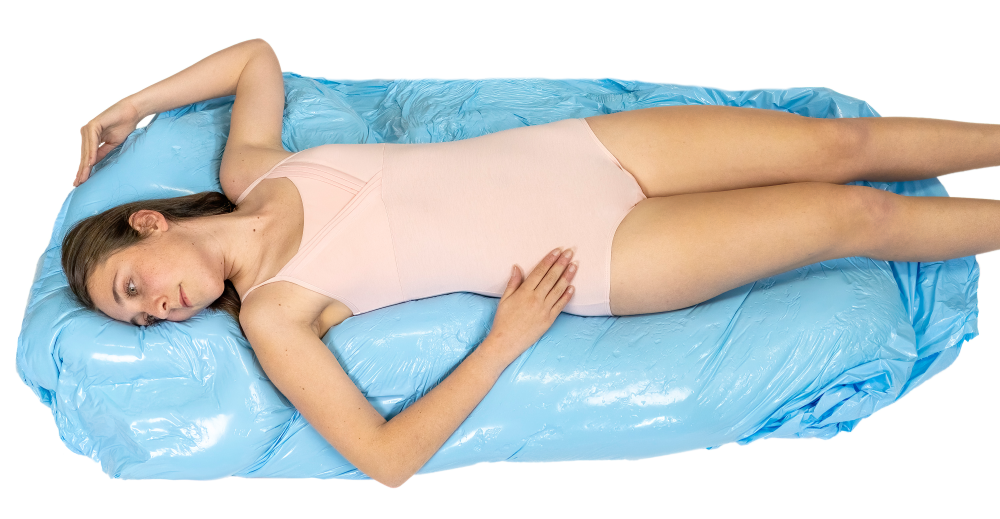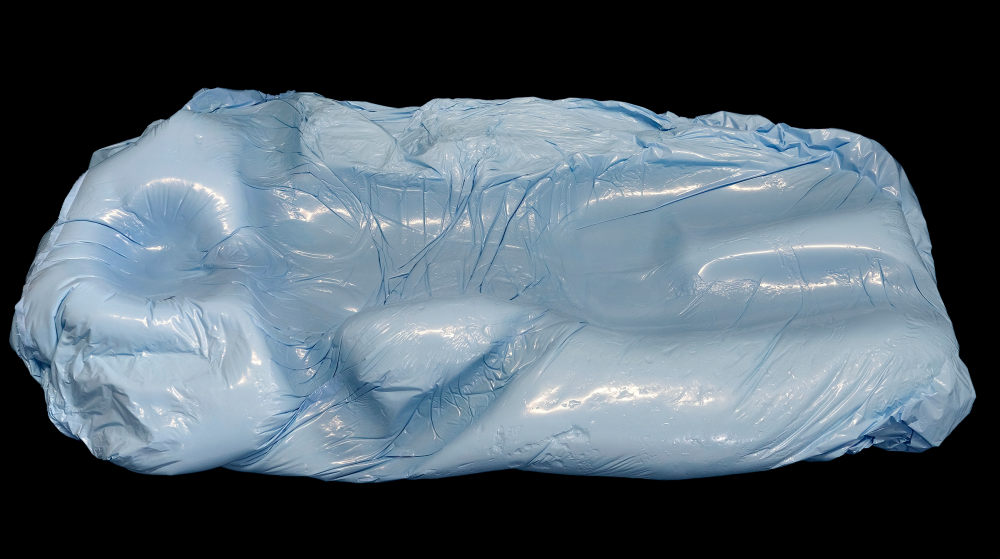Safety First!
Always practice safety for your patients and staff. Wear protective gloves, smock and eye protection. Have patient remove jewelry before making forms. Always follow directions!
Comfort Your Patient!
Tell your patient they must lay still for 15 minutes while the foam rises around them. It will feel comfortably warm as it rises and hardens in the position they will need to hold for treatment.
Each kit includes a set of foaming agents, and a special blue polyform bag.
You will receive a a 39” x 46” blue polyform bag for optimum use. Custom, hand made PVC bags are also available for more accuracy in anatomical immobilization and duplication.
Using 2 sets of our larger foaming agents allows you to create a whole body immobilization form. You will also need a 7 ft. bag. These are available by request.
If you use a tabletop device, use one set of AC500 or AC660 to create a form that is contoured to your device for an exact fit and hold.
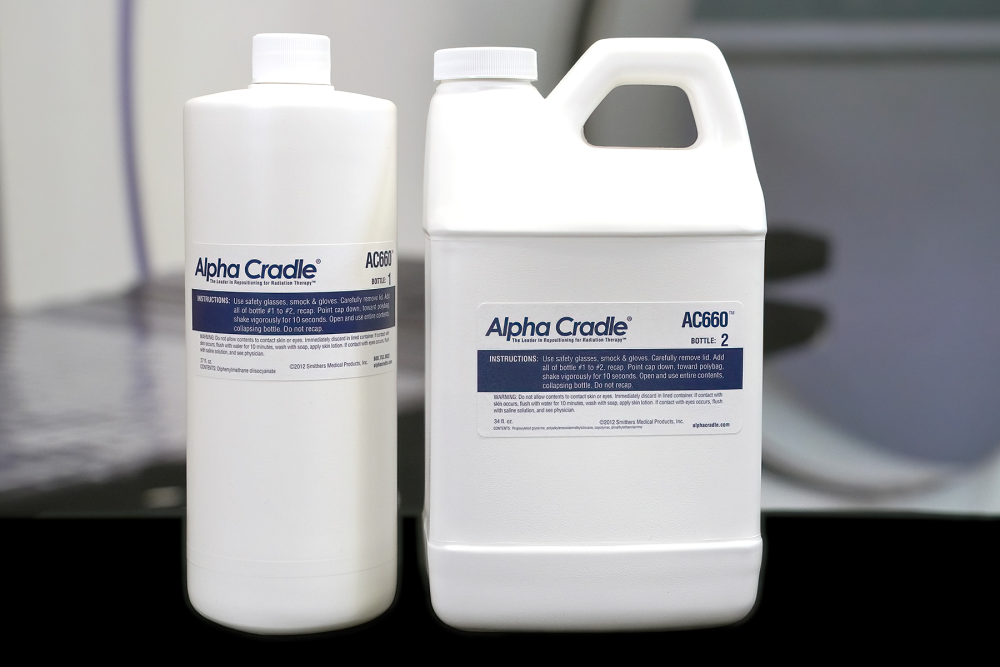
It’s Easy to Make the Perfect Form on Any Device You Use!
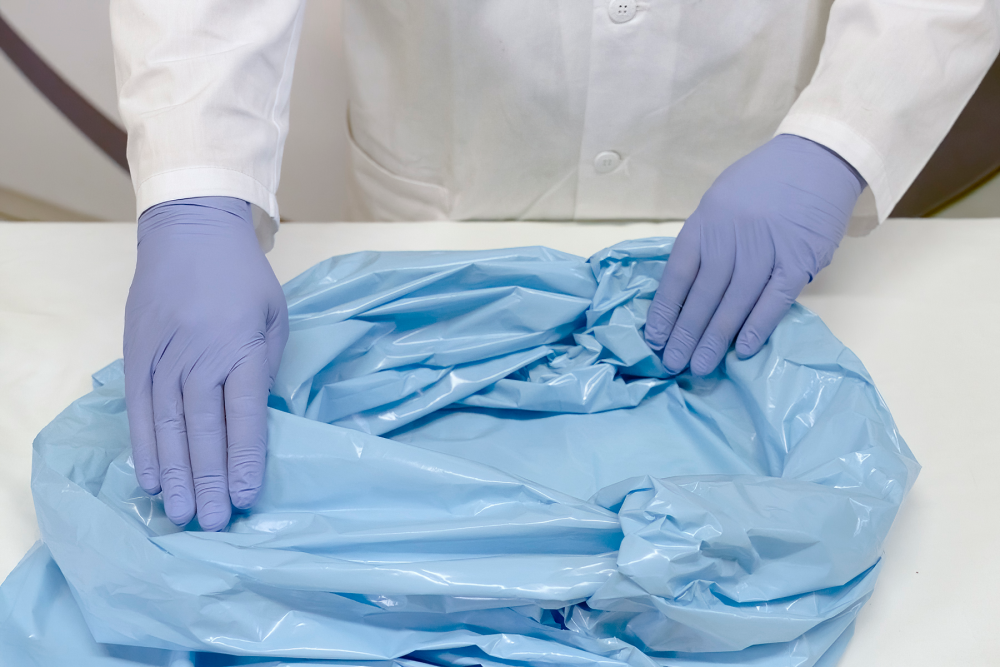 1. IF USING A TABLETOP DEVICE, open and spread out the blue polyform bag.
1. IF USING A TABLETOP DEVICE, open and spread out the blue polyform bag. 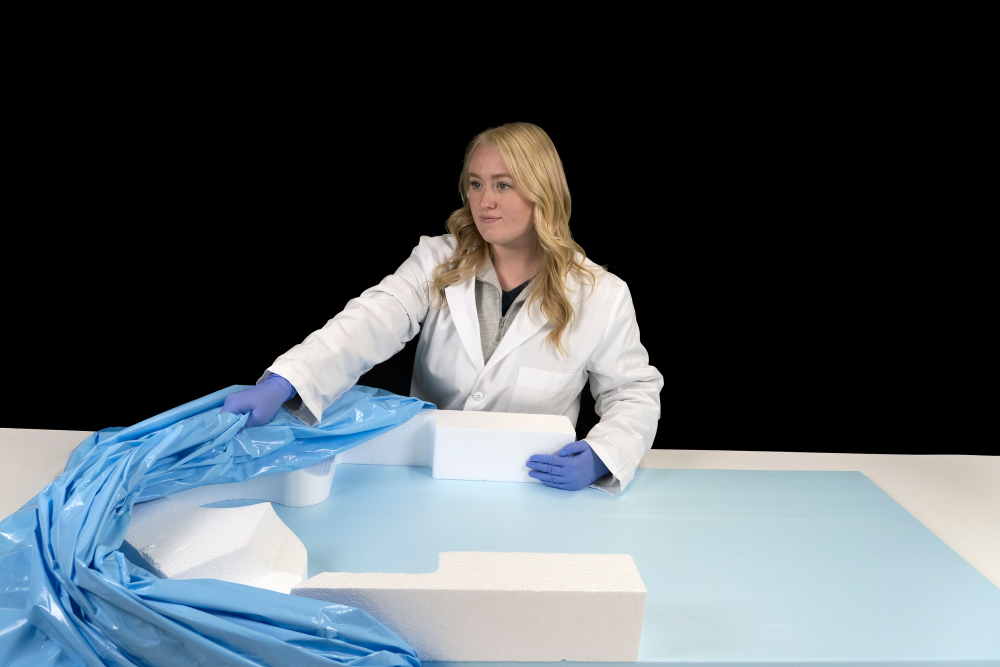 2. IF USING AN ALPHA CRADLE FORM, place the form into the blue polyform bag.
2. IF USING AN ALPHA CRADLE FORM, place the form into the blue polyform bag. 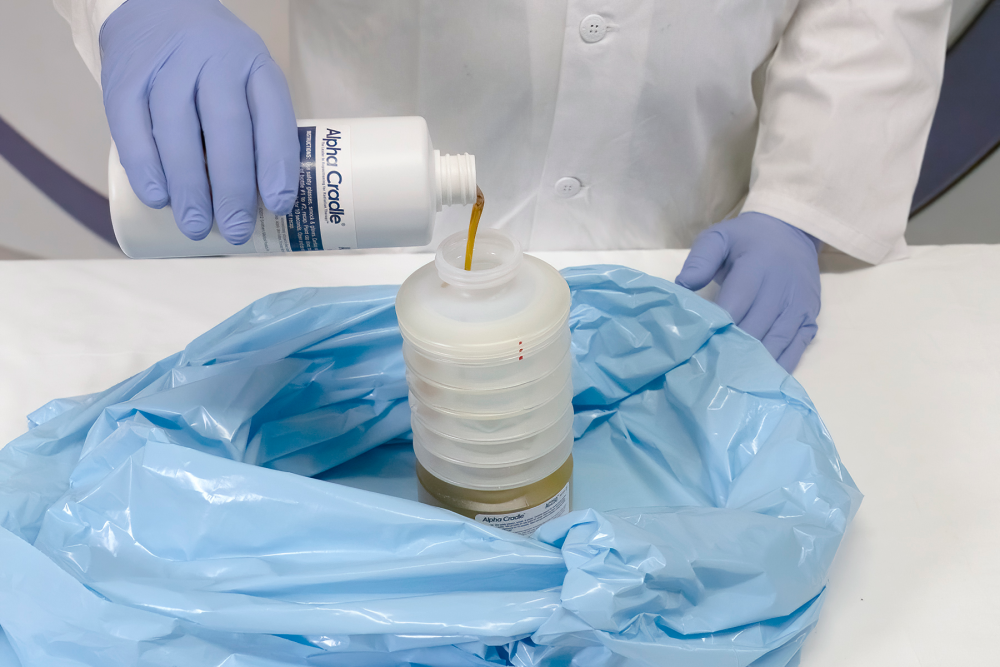 3. Carefully pour the entire contents of bottle #1 into bottle #2, discarding bottle #1 into a leakproof container.
3. Carefully pour the entire contents of bottle #1 into bottle #2, discarding bottle #1 into a leakproof container. 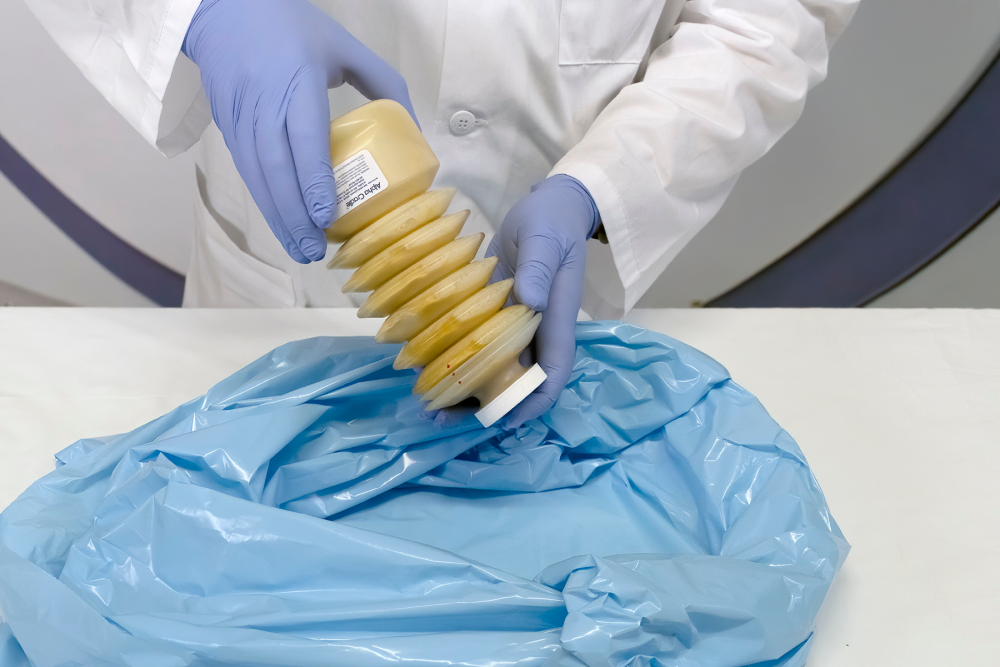 4. Recap the bottle and point it down inside the bag toward the base, away from everyone. The bottle must be shaken vigorously. Shake the bottle for only ten timed seconds and remove the cap immediately.
4. Recap the bottle and point it down inside the bag toward the base, away from everyone. The bottle must be shaken vigorously. Shake the bottle for only ten timed seconds and remove the cap immediately.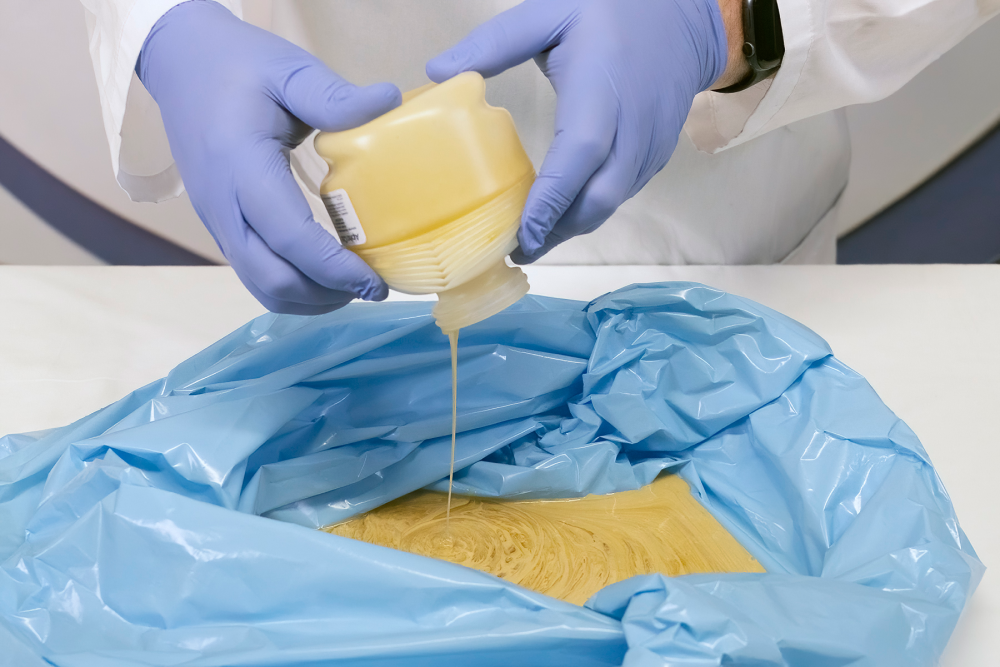 5. IF USING A TABLETOP DEVICE, carefully pour the entire contents into the bag, removing as much hang up as possible. Then fold bag down, remove air from bag and fold open end underneath.
5. IF USING A TABLETOP DEVICE, carefully pour the entire contents into the bag, removing as much hang up as possible. Then fold bag down, remove air from bag and fold open end underneath. 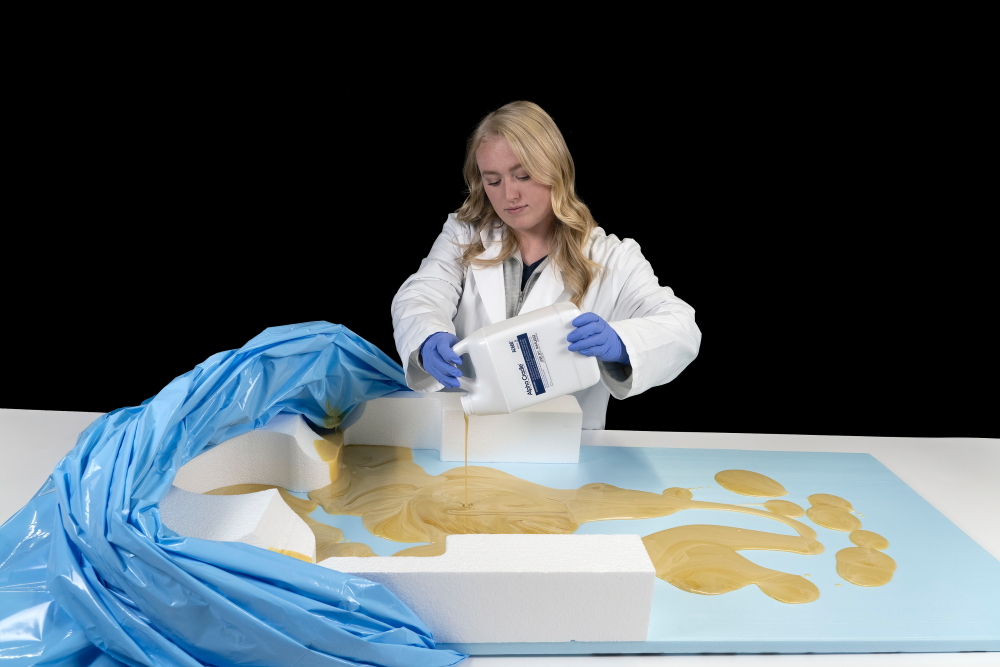 6. IF USING AN ALPHA CRADLE FORM, pour entire contents around the edges of the form. After placing the form deep into the bag, remove as much air as you can before folding the excess bag underneath the form.
6. IF USING AN ALPHA CRADLE FORM, pour entire contents around the edges of the form. After placing the form deep into the bag, remove as much air as you can before folding the excess bag underneath the form. 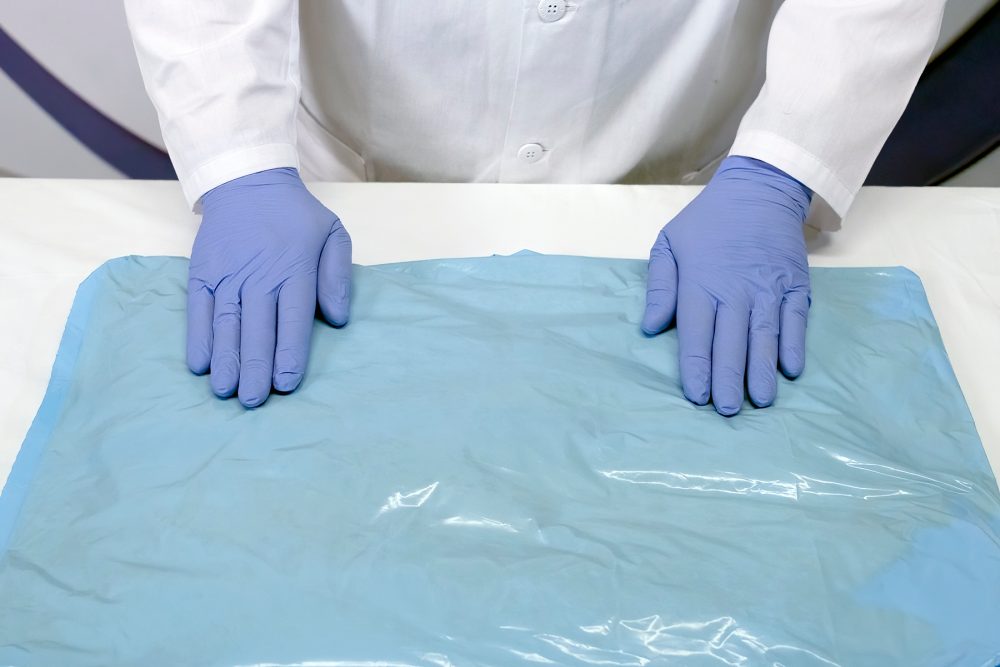 7. Spread the rising foam evenly throughout the bag.
7. Spread the rising foam evenly throughout the bag. 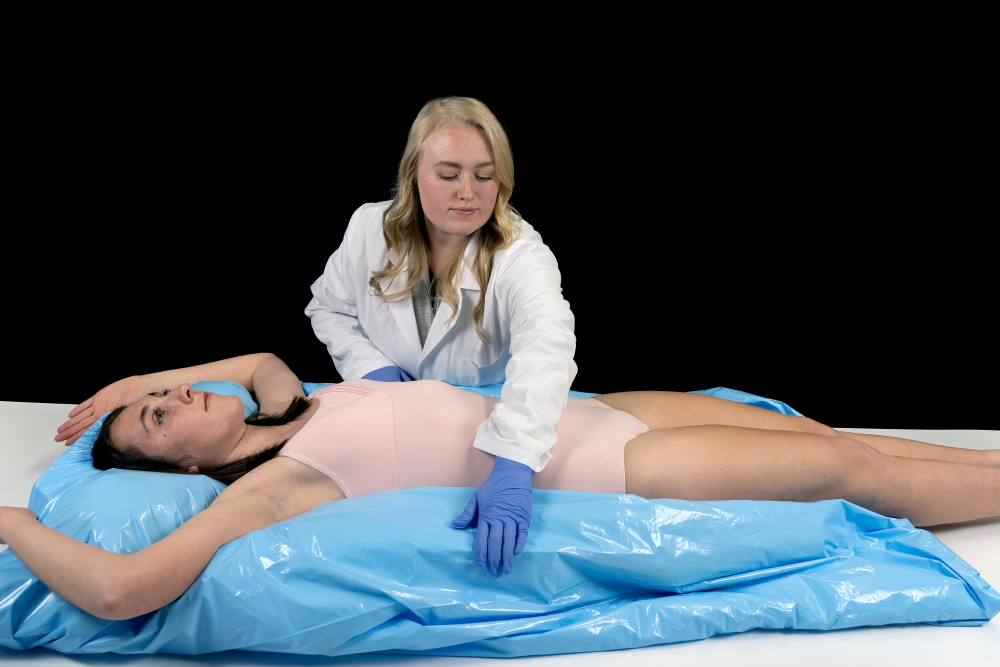 8. Lay the patient onto the bag, pressing the rising foam against them, OR place the bag of evenly spread foam ONTO YOUR TREATMENT DEVICE, THEN PLACE PATIENT ONTO BAG OF FOAM.
8. Lay the patient onto the bag, pressing the rising foam against them, OR place the bag of evenly spread foam ONTO YOUR TREATMENT DEVICE, THEN PLACE PATIENT ONTO BAG OF FOAM.
You now have a truly customized form to immobilize and reposition your patient.
HELPFUL HINTS
STRENGTHENING FORMS: After pouring the foam around the edges of the form and placing the form deep into the bag, remove as much air as you can before folding the excess bag underneath the form. Allow the foam to start to rise above the form, then push down, keeping the foam level with the form, forcing it tightly against the patient.
The form will not be useful if you don’t make a deep impression in the desired set-up position. This may mean putting pressure on top of the patient’s shoulders, keeping them deep in the form, allowing the foam to rise to the top of the form.
Foam that rises above the white form is useless and can be diverted to another area where more foam is needed, or it can be used to make a tight fitting mold by pressing it down and holding it down for several minutes, until the form begins to cool.
CURING EACH MOLD: It is critical that the patient does not move for a full 15 minutes to allow the form to harden properly. As the form hardens, you can feel it cool to room temperature within 15 minutes from the starting point (depending upon temperature and atmospheric conditions in the room). Do not allow the patient to get up until the cradle is cool (room temperature) to the touch. If the area underneath the patient is still warm, allow it to cool and harden properly before use. This will result in a secure, comfortable tool to quickly reposition your patient each time they come in for treatment.
